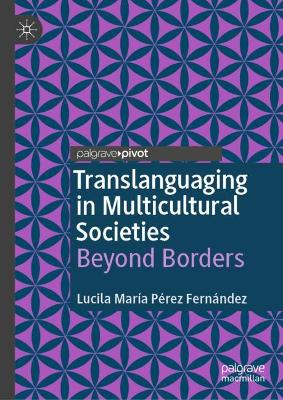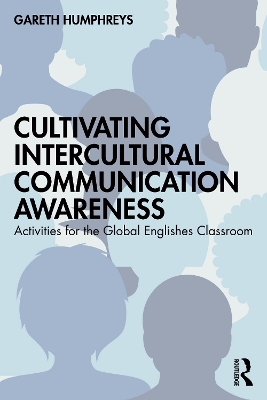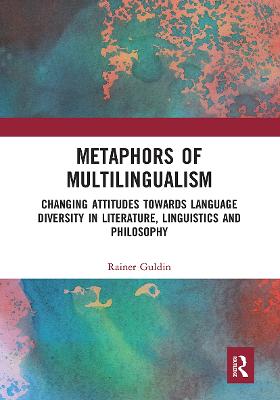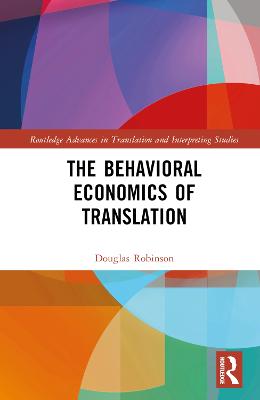Critical Polyglot Studies
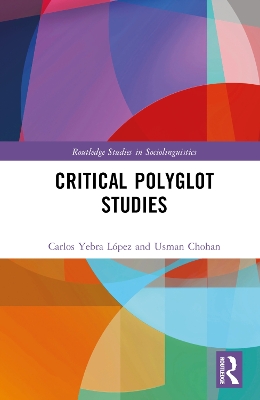 portes grátis
portes grátis
Critical Polyglot Studies
Chohan, Usman; Yebra Lopez, Carlos
Taylor & Francis Ltd
01/2025
200
Dura
9781032697741
Pré-lançamento - envio 15 a 20 dias após a sua edição
Descrição não disponível.
Contents
List of Tables
List of Figures
List of Acronyms
Preface
Chapter 1: Introduction
Introduction
Exposing the Colonial Origins
and Mediation of Mainstream
Polyglossia
Rethinking Polyglossia as a
North Atlantic Universal
Enter the Polyglot Community
The (D)evolution of the Polyglot
Community into the Polyglot
Industry-cum-Matrix
The Case for Critical Polyglot
Studies
CPS' Theoretical, Methodological and
Normative Commitments *
Theory
Ontology
Epistemology
Methodology
Normativity
Outline of this Book
Part 1: The Polyglot Industry: A Cartography
Chapter 2: The Polyglot Community: Genealogy and Nature
Introduction
Enter Polyglossia: Commoditizing an
Ethnonational Identity Marker
The (Neo)colonial/Ethnonational
Rationality
The (Neo)colonial/Ethnonational
Partial Shift towards and Overlap
with Neoliberalism
Enter The Polyglot Community: General
Normative Idea and Material Conditions
The Mid-to-Late 1990s: From
Internet Relay Chat to the World
The 2000s: The Early YouTube
'Polyglots' and the Tension
between Showmanship and
Community Building
The 2010s: The Road to 'Global'
Hybridity
Conclusion
Chapter 3: The Polyglot Industry: Experts and Institutions
Understanding the Polyglot Industry: When,
Why and How it Works
Commercializing the Polyglot Community's
Attention
The rise of the attention economy
The Fourth Screen: Web 2.0 and the
Smartphones (2010s to Present)
Social networks
YouTube
Facebook
Italki
X (Twitter)
Language Learning Platforms
Duolingo
Glossika
uTalk
How Language Learning
Platforms and Social
Networks Converge
Polyglot Gatherings
Polyglot Gatherings (annual)
Polyglot Gatherings (weekly)
How Polyglot Gatherings Converge
with Social Networks, Language
Learning Apps and Print Media
Print Media
1950 to 1995: Polyglossia avant
la lettre
Mid 1990s-2005: Early Recognition
and Exploration
2005-2015: The Rise and
Consolidation of Print Media as a
Polyglot Industry Sector
2015 to present: Diversity, Inclusion,
Hyperpolyglossia and AI
Conclusion: Saving the Polyglot Community from the
Language-Industrial Complex
Chapter 4: The Polyglot Matrix: The Ideology of the Polyglot Industry
Introduction
Polyglot Matrix Myths
Myth #1: (Non)nativespeakerism
Nationalism/colonialism
Performativity
Beyond native-speakerism
L1 Speakers as Role Models,
L1+n Speakers as Deficient
Myth #2: Accentism
Myth #3: Foreignness
Myth # 4: Thinking in Languages
Myth # 5: Languages as Countable
Myth # 6: Code-switching
Myth # 7: Neo-Whorfianism
Myth # 8: Flaggism
Myth # 9: Multilingual exceptionalism
Myth # 10: Necessarily Positive
Correlation Between Polyglossia
and Tolerance
Conclusion
Part 2: Critical Polyglot Studies: A Roadmap
Chapter 5: Programmatic Points and Best Practices
Programmatic Points
Theory
Ontology
Epistemology
Methodology
Political Economy
Normativity
Best Practices
Social Networks
Language Learning Applications
Polyglot Meetings
Print Media
Concluding Remarks
Chapter 6: Institutional Case Studies
The Hyperpolyglot Activist
Introduction
Positioning vis-a-vis
the Hegemonic
Rationalities
Polyglot Industry
Intervention
Polyglot Matrix
Intervention
HYPIA: The International Association
of Hyperpolyglots
Introduction
Positioning vis-a-vis
the Hegemonic
Rationalities
Polyglot Industry
Intervention
Polyglot Matrix
Intervention
Final Words
Index
List of Tables
List of Figures
List of Acronyms
Preface
Chapter 1: Introduction
Introduction
Exposing the Colonial Origins
and Mediation of Mainstream
Polyglossia
Rethinking Polyglossia as a
North Atlantic Universal
Enter the Polyglot Community
The (D)evolution of the Polyglot
Community into the Polyglot
Industry-cum-Matrix
The Case for Critical Polyglot
Studies
CPS' Theoretical, Methodological and
Normative Commitments *
Theory
Ontology
Epistemology
Methodology
Normativity
Outline of this Book
Part 1: The Polyglot Industry: A Cartography
Chapter 2: The Polyglot Community: Genealogy and Nature
Introduction
Enter Polyglossia: Commoditizing an
Ethnonational Identity Marker
The (Neo)colonial/Ethnonational
Rationality
The (Neo)colonial/Ethnonational
Partial Shift towards and Overlap
with Neoliberalism
Enter The Polyglot Community: General
Normative Idea and Material Conditions
The Mid-to-Late 1990s: From
Internet Relay Chat to the World
The 2000s: The Early YouTube
'Polyglots' and the Tension
between Showmanship and
Community Building
The 2010s: The Road to 'Global'
Hybridity
Conclusion
Chapter 3: The Polyglot Industry: Experts and Institutions
Understanding the Polyglot Industry: When,
Why and How it Works
Commercializing the Polyglot Community's
Attention
The rise of the attention economy
The Fourth Screen: Web 2.0 and the
Smartphones (2010s to Present)
Social networks
YouTube
Italki
X (Twitter)
Language Learning Platforms
Duolingo
Glossika
uTalk
How Language Learning
Platforms and Social
Networks Converge
Polyglot Gatherings
Polyglot Gatherings (annual)
Polyglot Gatherings (weekly)
How Polyglot Gatherings Converge
with Social Networks, Language
Learning Apps and Print Media
Print Media
1950 to 1995: Polyglossia avant
la lettre
Mid 1990s-2005: Early Recognition
and Exploration
2005-2015: The Rise and
Consolidation of Print Media as a
Polyglot Industry Sector
2015 to present: Diversity, Inclusion,
Hyperpolyglossia and AI
Conclusion: Saving the Polyglot Community from the
Language-Industrial Complex
Chapter 4: The Polyglot Matrix: The Ideology of the Polyglot Industry
Introduction
Polyglot Matrix Myths
Myth #1: (Non)nativespeakerism
Nationalism/colonialism
Performativity
Beyond native-speakerism
L1 Speakers as Role Models,
L1+n Speakers as Deficient
Myth #2: Accentism
Myth #3: Foreignness
Myth # 4: Thinking in Languages
Myth # 5: Languages as Countable
Myth # 6: Code-switching
Myth # 7: Neo-Whorfianism
Myth # 8: Flaggism
Myth # 9: Multilingual exceptionalism
Myth # 10: Necessarily Positive
Correlation Between Polyglossia
and Tolerance
Conclusion
Part 2: Critical Polyglot Studies: A Roadmap
Chapter 5: Programmatic Points and Best Practices
Programmatic Points
Theory
Ontology
Epistemology
Methodology
Political Economy
Normativity
Best Practices
Social Networks
Language Learning Applications
Polyglot Meetings
Print Media
Concluding Remarks
Chapter 6: Institutional Case Studies
The Hyperpolyglot Activist
Introduction
Positioning vis-a-vis
the Hegemonic
Rationalities
Polyglot Industry
Intervention
Polyglot Matrix
Intervention
HYPIA: The International Association
of Hyperpolyglots
Introduction
Positioning vis-a-vis
the Hegemonic
Rationalities
Polyglot Industry
Intervention
Polyglot Matrix
Intervention
Final Words
Index
Este título pertence ao(s) assunto(s) indicados(s). Para ver outros títulos clique no assunto desejado.
Polyglossia;Polyglot;Sociolinguistics;Language and culture;Sociology of language;Philosophy of language;Carlos Yebra Lopez;Usman W. Chohan
Contents
List of Tables
List of Figures
List of Acronyms
Preface
Chapter 1: Introduction
Introduction
Exposing the Colonial Origins
and Mediation of Mainstream
Polyglossia
Rethinking Polyglossia as a
North Atlantic Universal
Enter the Polyglot Community
The (D)evolution of the Polyglot
Community into the Polyglot
Industry-cum-Matrix
The Case for Critical Polyglot
Studies
CPS' Theoretical, Methodological and
Normative Commitments *
Theory
Ontology
Epistemology
Methodology
Normativity
Outline of this Book
Part 1: The Polyglot Industry: A Cartography
Chapter 2: The Polyglot Community: Genealogy and Nature
Introduction
Enter Polyglossia: Commoditizing an
Ethnonational Identity Marker
The (Neo)colonial/Ethnonational
Rationality
The (Neo)colonial/Ethnonational
Partial Shift towards and Overlap
with Neoliberalism
Enter The Polyglot Community: General
Normative Idea and Material Conditions
The Mid-to-Late 1990s: From
Internet Relay Chat to the World
The 2000s: The Early YouTube
'Polyglots' and the Tension
between Showmanship and
Community Building
The 2010s: The Road to 'Global'
Hybridity
Conclusion
Chapter 3: The Polyglot Industry: Experts and Institutions
Understanding the Polyglot Industry: When,
Why and How it Works
Commercializing the Polyglot Community's
Attention
The rise of the attention economy
The Fourth Screen: Web 2.0 and the
Smartphones (2010s to Present)
Social networks
YouTube
Facebook
Italki
X (Twitter)
Language Learning Platforms
Duolingo
Glossika
uTalk
How Language Learning
Platforms and Social
Networks Converge
Polyglot Gatherings
Polyglot Gatherings (annual)
Polyglot Gatherings (weekly)
How Polyglot Gatherings Converge
with Social Networks, Language
Learning Apps and Print Media
Print Media
1950 to 1995: Polyglossia avant
la lettre
Mid 1990s-2005: Early Recognition
and Exploration
2005-2015: The Rise and
Consolidation of Print Media as a
Polyglot Industry Sector
2015 to present: Diversity, Inclusion,
Hyperpolyglossia and AI
Conclusion: Saving the Polyglot Community from the
Language-Industrial Complex
Chapter 4: The Polyglot Matrix: The Ideology of the Polyglot Industry
Introduction
Polyglot Matrix Myths
Myth #1: (Non)nativespeakerism
Nationalism/colonialism
Performativity
Beyond native-speakerism
L1 Speakers as Role Models,
L1+n Speakers as Deficient
Myth #2: Accentism
Myth #3: Foreignness
Myth # 4: Thinking in Languages
Myth # 5: Languages as Countable
Myth # 6: Code-switching
Myth # 7: Neo-Whorfianism
Myth # 8: Flaggism
Myth # 9: Multilingual exceptionalism
Myth # 10: Necessarily Positive
Correlation Between Polyglossia
and Tolerance
Conclusion
Part 2: Critical Polyglot Studies: A Roadmap
Chapter 5: Programmatic Points and Best Practices
Programmatic Points
Theory
Ontology
Epistemology
Methodology
Political Economy
Normativity
Best Practices
Social Networks
Language Learning Applications
Polyglot Meetings
Print Media
Concluding Remarks
Chapter 6: Institutional Case Studies
The Hyperpolyglot Activist
Introduction
Positioning vis-a-vis
the Hegemonic
Rationalities
Polyglot Industry
Intervention
Polyglot Matrix
Intervention
HYPIA: The International Association
of Hyperpolyglots
Introduction
Positioning vis-a-vis
the Hegemonic
Rationalities
Polyglot Industry
Intervention
Polyglot Matrix
Intervention
Final Words
Index
List of Tables
List of Figures
List of Acronyms
Preface
Chapter 1: Introduction
Introduction
Exposing the Colonial Origins
and Mediation of Mainstream
Polyglossia
Rethinking Polyglossia as a
North Atlantic Universal
Enter the Polyglot Community
The (D)evolution of the Polyglot
Community into the Polyglot
Industry-cum-Matrix
The Case for Critical Polyglot
Studies
CPS' Theoretical, Methodological and
Normative Commitments *
Theory
Ontology
Epistemology
Methodology
Normativity
Outline of this Book
Part 1: The Polyglot Industry: A Cartography
Chapter 2: The Polyglot Community: Genealogy and Nature
Introduction
Enter Polyglossia: Commoditizing an
Ethnonational Identity Marker
The (Neo)colonial/Ethnonational
Rationality
The (Neo)colonial/Ethnonational
Partial Shift towards and Overlap
with Neoliberalism
Enter The Polyglot Community: General
Normative Idea and Material Conditions
The Mid-to-Late 1990s: From
Internet Relay Chat to the World
The 2000s: The Early YouTube
'Polyglots' and the Tension
between Showmanship and
Community Building
The 2010s: The Road to 'Global'
Hybridity
Conclusion
Chapter 3: The Polyglot Industry: Experts and Institutions
Understanding the Polyglot Industry: When,
Why and How it Works
Commercializing the Polyglot Community's
Attention
The rise of the attention economy
The Fourth Screen: Web 2.0 and the
Smartphones (2010s to Present)
Social networks
YouTube
Italki
X (Twitter)
Language Learning Platforms
Duolingo
Glossika
uTalk
How Language Learning
Platforms and Social
Networks Converge
Polyglot Gatherings
Polyglot Gatherings (annual)
Polyglot Gatherings (weekly)
How Polyglot Gatherings Converge
with Social Networks, Language
Learning Apps and Print Media
Print Media
1950 to 1995: Polyglossia avant
la lettre
Mid 1990s-2005: Early Recognition
and Exploration
2005-2015: The Rise and
Consolidation of Print Media as a
Polyglot Industry Sector
2015 to present: Diversity, Inclusion,
Hyperpolyglossia and AI
Conclusion: Saving the Polyglot Community from the
Language-Industrial Complex
Chapter 4: The Polyglot Matrix: The Ideology of the Polyglot Industry
Introduction
Polyglot Matrix Myths
Myth #1: (Non)nativespeakerism
Nationalism/colonialism
Performativity
Beyond native-speakerism
L1 Speakers as Role Models,
L1+n Speakers as Deficient
Myth #2: Accentism
Myth #3: Foreignness
Myth # 4: Thinking in Languages
Myth # 5: Languages as Countable
Myth # 6: Code-switching
Myth # 7: Neo-Whorfianism
Myth # 8: Flaggism
Myth # 9: Multilingual exceptionalism
Myth # 10: Necessarily Positive
Correlation Between Polyglossia
and Tolerance
Conclusion
Part 2: Critical Polyglot Studies: A Roadmap
Chapter 5: Programmatic Points and Best Practices
Programmatic Points
Theory
Ontology
Epistemology
Methodology
Political Economy
Normativity
Best Practices
Social Networks
Language Learning Applications
Polyglot Meetings
Print Media
Concluding Remarks
Chapter 6: Institutional Case Studies
The Hyperpolyglot Activist
Introduction
Positioning vis-a-vis
the Hegemonic
Rationalities
Polyglot Industry
Intervention
Polyglot Matrix
Intervention
HYPIA: The International Association
of Hyperpolyglots
Introduction
Positioning vis-a-vis
the Hegemonic
Rationalities
Polyglot Industry
Intervention
Polyglot Matrix
Intervention
Final Words
Index
Este título pertence ao(s) assunto(s) indicados(s). Para ver outros títulos clique no assunto desejado.

